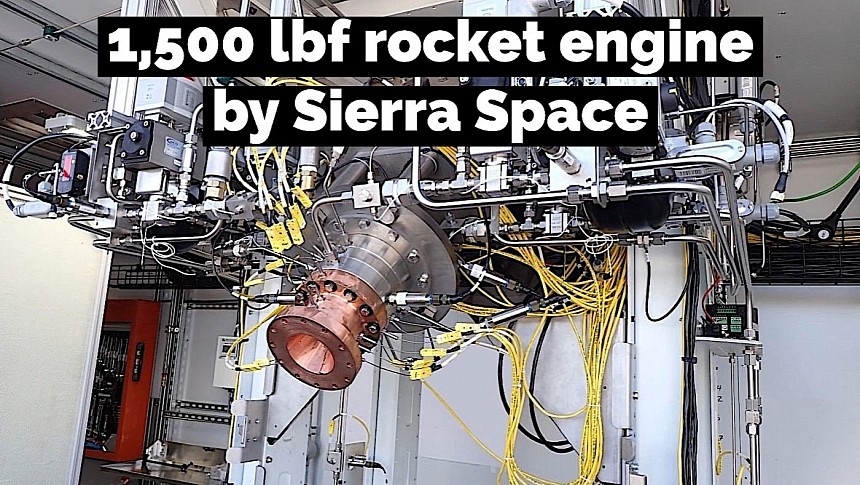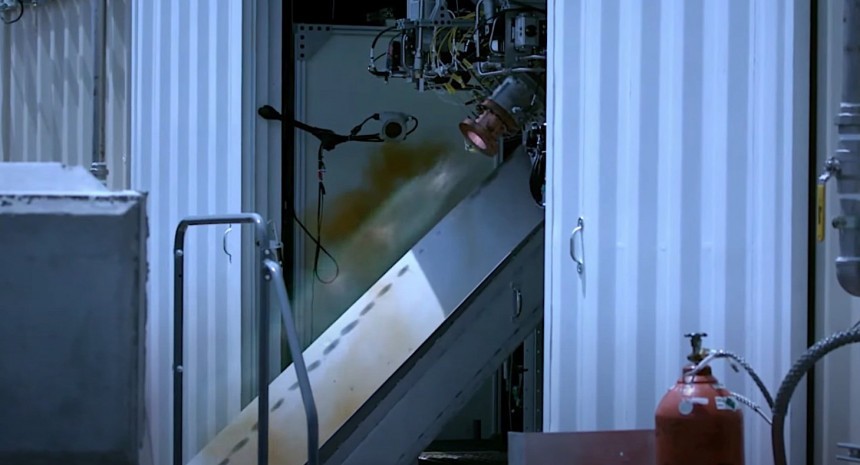Whereas up until recently we lived in a world where new engine development was mainly done in the automotive industry, the resurrection of humans’ interest in space exploration has some interesting side effects. Like the flood of new and exciting engines meant to power the rockets and spacecraft of the future.
The latest engine to join the news feed is something called the Vortex VRM1500-H. It most likely doesn’t ring all that many bells, and it shouldn’t because it’s still in development. But if all goes well, it may very well become the next powerplant to propel spaceships in the big black void as they perform orbital maneuvers, and perhaps even landers closing in on alien worlds.
The engine is being put together by Sierra Space, a company we already know for its work on the Dream Chaser spaceplane and the LIFE module which will be attached to Jeff Bezos’ upcoming Orbital Reef space station.
The new piece of hardware shown this week, is in essence, an engine powered by hypergolic propellant. That means a combination between a fuel and an oxidizer that spontaneously ignites as soon as they come in contact with one another. It is one of the most common kind of liquid propellant used in space exploration, but Sierra Space does not say the exact combination that makes this engine run (several are possible, the most common being a combination between dinitrogen tetroxide and hydrazine).
We learned of the new Vortex engine this week, after its maker made public the fact that a hot fire test campaign for it has been completed. The video below this text shows, in just 15 seconds, how that went.
The company says that during the tests, the engine reached a maximum thrust of 1,500 lbf, which seems to be what it was gunning for. Sierra did not reveal many other details about the engine, but we do know it uses something described as “a unique swirling propellant flow to naturally cool the combustion chamber.”
It’s unclear when the Vortex will become available for use in space-bound hardware, but it will be offered to those interested in pressure-fed and electric pump-fed variants. Both will be able to reignite multiple times, thanks to the type of fuel they use, and will be assembled using additive manufacturing.
Until we get to that point, though, further testing is needed. Sierra Space says that will continue, so it's unclear when the engine will be ready for real-life use. Separately, a much more powerful variant, capable of developing 35,000 lbf of thrust, is being developed together with the Air Force Research Laboratory. This one will not be meant to power spacecraft in orbit or landers, but the upper stage of future rockets.
The engine is being put together by Sierra Space, a company we already know for its work on the Dream Chaser spaceplane and the LIFE module which will be attached to Jeff Bezos’ upcoming Orbital Reef space station.
The new piece of hardware shown this week, is in essence, an engine powered by hypergolic propellant. That means a combination between a fuel and an oxidizer that spontaneously ignites as soon as they come in contact with one another. It is one of the most common kind of liquid propellant used in space exploration, but Sierra Space does not say the exact combination that makes this engine run (several are possible, the most common being a combination between dinitrogen tetroxide and hydrazine).
The company says that during the tests, the engine reached a maximum thrust of 1,500 lbf, which seems to be what it was gunning for. Sierra did not reveal many other details about the engine, but we do know it uses something described as “a unique swirling propellant flow to naturally cool the combustion chamber.”
It’s unclear when the Vortex will become available for use in space-bound hardware, but it will be offered to those interested in pressure-fed and electric pump-fed variants. Both will be able to reignite multiple times, thanks to the type of fuel they use, and will be assembled using additive manufacturing.
Until we get to that point, though, further testing is needed. Sierra Space says that will continue, so it's unclear when the engine will be ready for real-life use. Separately, a much more powerful variant, capable of developing 35,000 lbf of thrust, is being developed together with the Air Force Research Laboratory. This one will not be meant to power spacecraft in orbit or landers, but the upper stage of future rockets.








